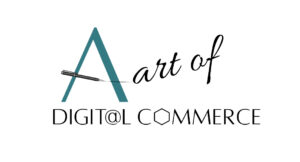
The buzz is everywhere. Broadly described as “digital transformation”, companies of all sizes are contending with the need to shift their model and way of doing business.
The concept itself is dynamic, with complex features such as cognitive technologies, distributive data, cloud services, rapid iterations & experiments, workflow logic, business intelligence and a stack of software solutions.
For many, this pivot appears daunting, lengthy, expensive and uncertain.
My suggestion is to take a micro-to-macro approach. This begins with incremental steps towards an agile culture. Once agility is achieved, there will be far greater confidence and competency to facilitate the transformative process.
Step #1
Establish specific stages of change that embrace the following:
- Small cross-functional teams
- Data-informed strategies
- Idea sharing
- Ongoing experiments
- Project sprints
- Performance-driven targets
- Continual testing and measuring outcomes
Step #2
Promote a growth and learning mindset throughout the organization. Champion opportunities for team members to advance their skills and expand capabilities. In an agile workplace, a broadening of proficiency will have a direct impact on the pace of innovation.
Step #3
Leaders must resolutely model the behaviors, drive, ambition and actions that are essential for the entire business entity to adopt.
Step #4
Reset projects and production plans with the aim to create space and time to test new concepts, ideas and tools.
Step #5
Point out critical advantages and these merits of an agile operation:
- Increased efficiency
- Reduction of operating and technology costs
- Tailor workflows and processes
- Identify new opportunities and rapid wins
- Underscore importance of security and compliance
- Boost data management, storage and diagnostics
- Perform business analysis with data visualization
- Utilize machine learning for predictions and decision-making
Step #6
When switching to agile methods, evaluate current processes and ask key questions:
- What improves?
- What advances?
- What gets automated?
- What niches are created?
- What gains are achieved?
- What progress can be valued?
Step #7
Recognize the people requirements for a seamless and smooth transition to an agile model. For customers, teams, users of systems, partners and vendors, consider the following:
- Clear and consistent communication
- Inclusive training and coaching
- Purpose and destination imperatives
- Secure adoption by answering ‘how does this help me?“
- Provide feedback channels
- Ardent endorsements by leadership
- Validate and share the benefits
Step #8
To ease concerns, gather department heads and company leaders to assess the current state against the ideal state in order to determine the size and scope of the gap.
The group must then make decisions on the best tactics, tools and talent needed to cross the chasm. Mitigate any sense of overwhelm with a reminder that these collaborative efforts are pertinent to the end goal of transformation.
Step #9
Foster excitement for a G.R.O.W.T.H. expedition
Goals to pursue
Resiliency through change
Optimize to improve
Willpower to persist
Transform thinking
Harness the energy
Step #10
When pursuing an agile work environment, there will be many blockades, naysayers, structural limitations, and both known and unknown problems.
Recognize and applaud wins, even the itty-bitty ones! Avoid measuring successes by level of significance.
It takes a collective spirit to conquer every challenge, face each headwind, and defeat resistance as you forge a tangible and progressive path. Promote forward momentum and celebrate every inch along the way!
More insights can be found on my website: ArtofDigitalCommcerce.com
